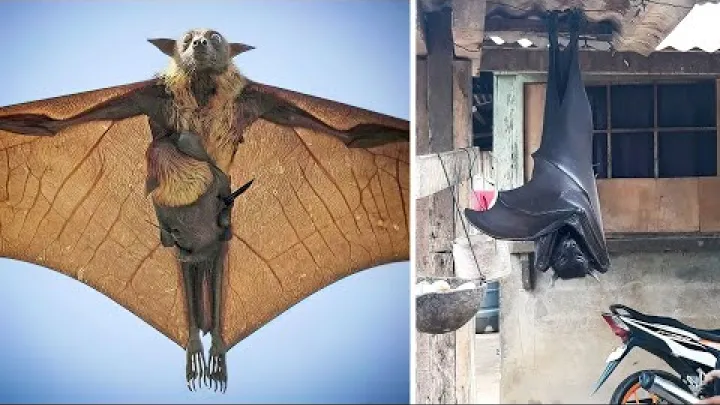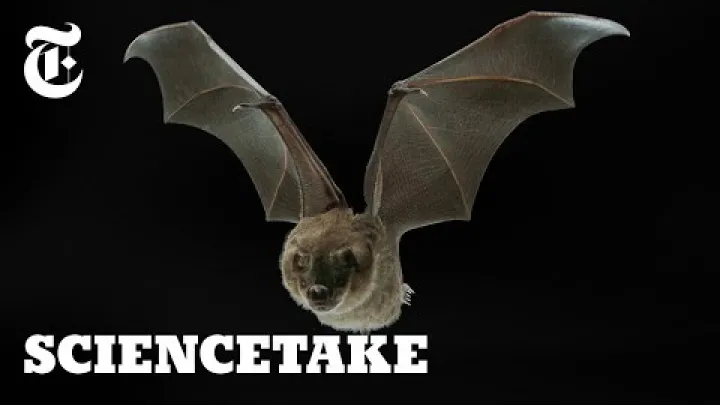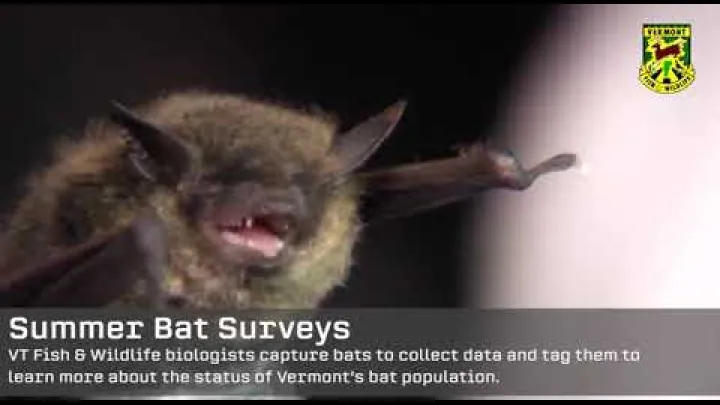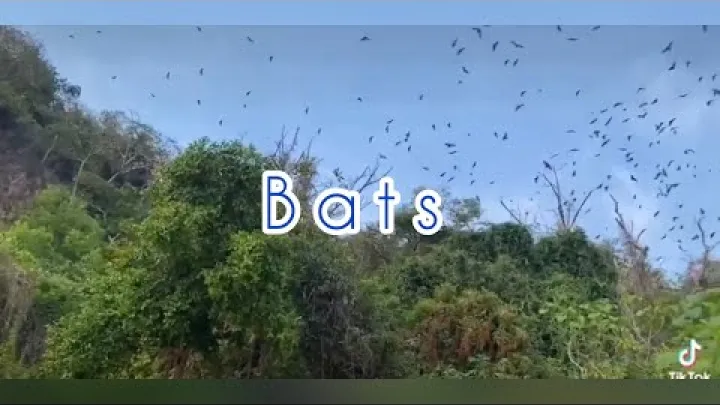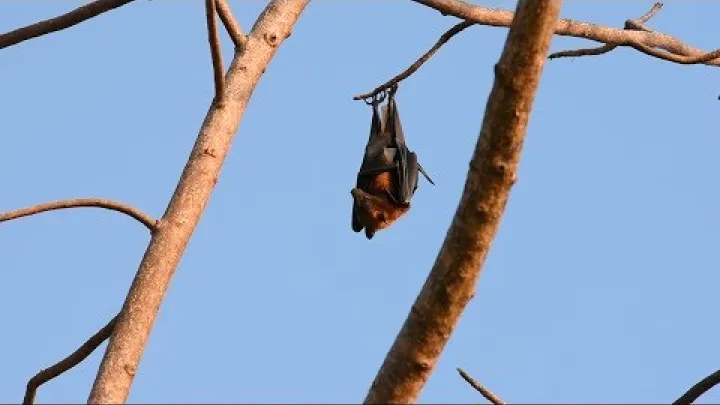Discover the Fascinating World of Philippines Bats: Unveiling their Unique Traits and Ecological Importance
Step into the enchanting world of Philippines bats, where these mystical creatures with their unique traits and ecological importance await your discovery. With a rich diversity of over 70 species, the Philippines is a haven for bat enthusiasts and nature lovers alike.
These remarkable flying mammals, known for their ability to navigate in complete darkness using echolocation, play a vital role in maintaining the balance of the ecosystem. From pollinating flowers to dispersing seeds, bats contribute to the reproduction and survival of countless plant species. They also serve as natural pest controllers, feasting on insects and reducing the need for harmful pesticides.
Embark on a journey to unravel the fascinating lives of these elusive nocturnal creatures. Learn about their incredible adaptations, such as their remarkable wingspan and the unique strategies they employ to find food. Discover the different bat species that call the Philippines home, from the majestic fruit bats to the tiny insectivorous ones.
Join us as we delve into the world of Philippines bats, uncovering the secrets of their evolution, their vital ecological roles, and the importance of conserving these extraordinary creatures for future generations to enjoy.
The Diversity of Bats in the Philippines
The Philippines is a biodiversity hotspot, and it is no surprise that it is also home to a diverse array of bat species. With over 70 species, the Philippines boasts one of the highest bat diversities in the world. These bats can be found in various habitats, including forests, caves, and even urban areas.
One of the most iconic bat species in the Philippines is the fruit bat, also known as the flying fox. These majestic creatures have a wingspan that can reach up to 1.5 meters, making them one of the largest bat species in the world. Fruit bats play a crucial role in pollinating trees and dispersing seeds, contributing to the regeneration of forests and the maintenance of plant diversity.
Apart from fruit bats, the Philippines is also home to insectivorous bats that feed on insects. These smaller bats have adapted to a life of hunting in the dark, using echolocation to locate their prey. They can consume a large number of insects in a single night, making them valuable natural pest controllers.
The diversity of bat species in the Philippines is a testament to the country's rich and unique ecosystems. Exploring the different habitats and observing these bats in their natural environment is a thrilling experience that allows us to appreciate the incredible variety of life on Earth.
Unique Traits and Adaptations of Philippines Bats
Bats have evolved a range of unique traits and adaptations that enable them to thrive in their specialized ecological niches. One of the most notable adaptations of bats is their wings, which are modified forelimbs that allow them to fly. The wings of bats are incredibly flexible, allowing for precise and agile flight maneuvers.
Another remarkable adaptation of bats is their ability to navigate in complete darkness using echolocation. Bats emit high-frequency sounds that bounce off objects in their environment, and they use the echoes of these sounds to create a mental map of their surroundings. This extraordinary ability allows bats to fly and hunt in the dark, where their prey is abundant.
In addition to their wings and echolocation abilities, bats have also developed unique feeding strategies. Fruit bats have long tongues that enable them to reach deep into flowers to extract nectar, while insectivorous bats have specialized teeth and jaws for capturing and consuming insects. These adaptations have allowed bats to exploit a wide range of food sources and occupy diverse ecological roles.
The unique traits and adaptations of Philippines bats make them truly remarkable creatures. Their ability to fly, navigate in the dark, and feed on a variety of food sources highlight their incredible versatility and resilience in the face of environmental challenges.
Ecological Importance of Philippines Bats
Bats play a crucial role in maintaining the balance of the ecosystem in the Philippines. Their ecological importance can be seen in their contributions to pollination, seed dispersal, and insect control.
One of the key roles of bats in the ecosystem is pollination. Many plant species in the Philippines rely on bats for pollination, as bats are efficient pollinators that can visit multiple flowers in a single night. By transferring pollen from one flower to another, bats facilitate the reproduction of plants and ensure the production of fruits and seeds.
In addition to pollination, bats are also important seed dispersers. As bats feed on fruits, they inadvertently consume seeds, which are then dispersed through their droppings. This seed dispersal mechanism allows plants to colonize new areas and maintain genetic diversity. Without bats, many plant species would struggle to reproduce and survive.
Furthermore, bats are natural pest controllers. Insectivorous bats consume vast quantities of insects, including agricultural pests. By preying on insects, bats help to control pest populations and reduce the need for harmful pesticides. This natural form of pest control is not only environmentally friendly but also economically beneficial for farmers.
The ecological importance of bats in the Philippines cannot be overstated. Their roles in pollination, seed dispersal, and insect control are vital for the maintenance of healthy ecosystems and the sustainability of agricultural systems. Protecting and conserving bat populations is crucial for ensuring the continued functioning of these ecosystems.
Threats and Conservation Efforts for Philippines Bats
Despite their ecological importance, bats in the Philippines face numerous threats that threaten their survival. Habitat loss, due to deforestation and urbanization, is one of the major threats to bat populations. As their natural habitats disappear, bats are forced to seek shelter in suboptimal environments, leading to population declines.
Another significant threat to bats in the Philippines is hunting and persecution. Some bat species are hunted for their meat or as part of traditional medicine practices. Additionally, bats are often misunderstood and feared, leading to their persecution and destruction of their roosting sites.
To address these threats, conservation efforts are underway to protect Philippines bats. One such effort is the establishment of protected areas and wildlife sanctuaries that provide safe havens for bats and other wildlife. These protected areas help to preserve bat habitats and ensure the long-term survival of bat populations.
Education and outreach programs are also essential in changing public perceptions and dispelling myths about bats. By raising awareness about the ecological importance of bats and their role in maintaining healthy ecosystems, these programs help to foster a greater appreciation for bats and encourage their conservation.
Collaboration between government agencies, conservation organizations, and local communities is crucial for the success of bat conservation efforts. By working together, we can ensure the protection of Philippines bats and the preservation of their unique ecological roles.
Bat-watching and Ecotourism in the Philippines
For nature enthusiasts and bat lovers, the Philippines offers exciting opportunities for bat-watching and ecotourism. Several locations in the country are known for their bat colonies and provide a chance to observe these fascinating creatures in their natural habitats.
One such location is the Monfort Bat Sanctuary in Samal Island, Davao del Norte. This sanctuary is home to millions of Geoffroy's Rousette fruit bats, making it the largest single colony of bats in the world. Visitors to the sanctuary can witness the breathtaking sight of millions of bats taking flight at sunset, creating a spectacle that is truly awe-inspiring.
Another popular destination for bat-watching is the Subterranean River National Park in Palawan. This UNESCO World Heritage Site is home to a diverse array of bat species, including the rare Palawan fruit bat. Exploring the underground river and observing the bats that call it home is a unique and unforgettable experience.
Ecotourism initiatives that focus on bat conservation are also gaining traction in the Philippines. These initiatives aim to raise awareness about the ecological importance of bats while providing sustainable economic opportunities for local communities. By participating in bat-watching tours and supporting local conservation efforts, visitors can contribute to the preservation of bat populations and their habitats.
Bat-watching and ecotourism in the Philippines not only offer a chance to appreciate the beauty and diversity of bats but also contribute to their conservation. By promoting responsible tourism practices and supporting local initiatives, we can ensure that future generations will continue to marvel at the wonders of Philippines bats.
Interesting Facts about Philippines Bats
The Philippine flying fox, also known as the giant golden-crowned flying fox, is one of the largest bat species in the world. It has a wingspan that can reach up to 1.7 meters.
The Philippine tube-nosed fruit bat is a unique bat species found only in the Philippines. It is known for its long, tubular nostrils, which are believed to enhance its sense of smell.
The Philippine bare-backed fruit bat is the only bat species in the world that lacks fur on its back. Its bare skin helps to regulate body temperature in the hot and humid Philippine forests.
The Philippine long-tongued fruit bat has a tongue that is longer than its body. This adaptation allows it to reach deep into flowers to extract nectar, making it an efficient pollinator.
The Philippine roundleaf bat is an insectivorous bat that has evolved leaf-shaped appendages on its nose and chin. These leaf-like structures help to camouflage the bat while roosting on tree branches.
Myths and Misconceptions about Bats
Bats have long been associated with myths, superstitions, and misconceptions. These misunderstandings have contributed to the negative perception of bats and the fear and persecution they often face.
One common myth about bats is that they are blind. In reality, bats have excellent eyesight, and many species can see as well as humans during the day. However, they rely more on echolocation for navigation and hunting in the dark.
Another misconception is that bats are aggressive and attack humans. Bats are generally shy and will avoid contact with humans whenever possible. Cases of bat-human interactions are rare, and the majority of bats pose no threat to humans.
Furthermore, bats are often associated with diseases, particularly rabies. While it is true that bats can carry the rabies virus, the incidence of rabies in bats is relatively low. Avoiding direct contact with bats and seeking medical attention if a bite or scratch occurs can help prevent the spread of rabies.
Dispelling these myths and misconceptions is crucial for fostering a greater understanding and appreciation for bats. By debunking these falsehoods, we can promote coexistence and encourage the conservation of these incredible creatures.
Famous Bat Species in the Philippines
The Philippines is home to several famous bat species that have captivated the imagination of people around the world. One such species is the golden-crowned flying fox, also known as the Philippine flying fox. With its impressive wingspan and golden fur, this bat is often regarded as a symbol of the Philippines' rich biodiversity.
Another famous bat species in the Philippines is the Philippine tube-nosed fruit bat. This bat is known for its unique appearance, with long, tubular nostrils that give it a distinctive and somewhat comical look. The Philippine tube-nosed fruit bat is endemic to the Philippines, making it a truly special and unique species.
The Palawan fruit bat, also known as the Palawan flying fox, is another famous bat species in the Philippines. Endemic to Palawan, this bat is an important pollinator and seed disperser in the island's forests. Its striking appearance, with its large size and reddish-brown fur, makes it a favorite subject for wildlife photographers.
These famous bat species serve as ambassadors for bat conservation in the Philippines. By raising awareness about their unique traits and ecological roles, we can inspire others to appreciate and protect all bat species in the country.
Conclusion: Appreciating and Protecting Philippines Bats
The Philippines is a treasure trove of bat diversity, offering a glimpse into the fascinating world of these extraordinary creatures. From their unique adaptations to their vital ecological roles, bats play an integral part in maintaining the balance of the ecosystem.
By pollinating flowers, dispersing seeds, and controlling insect populations, bats contribute to the reproduction and survival of numerous plant species. Their ecological services are invaluable, benefiting both natural ecosystems and human societies.
However, bats in the Philippines face threats such as habitat loss and persecution. It is crucial that we recognize the importance of conserving these remarkable creatures and take action to protect their habitats and ensure their survival.
Through education, outreach, and responsible tourism practices, we can promote a greater understanding and appreciation for bats. By dispelling myths and misconceptions, we can foster a sense of coexistence and encourage the conservation of bats for future generations to enjoy.
Let us embark on a journey to discover the captivating world of Philippines bats, appreciating their unique traits and ecological importance. Together, we can ensure a future where bats continue to thrive and contribute to the vibrant tapestry of life in the Philippines.
Your Nearby Location
Your Favorite
Post content
All posting is Free of charge and registration is Not required.
